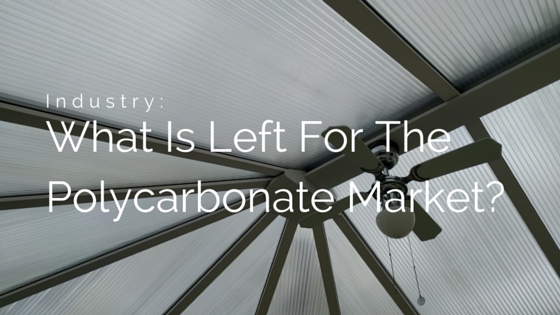The glazed extension roof market certainly isn’t what it used to be. Years and years of research and development, changing consumer demand and the basic need for things to be better have taken us to where we are now. A plethora of solid roof products, highly energy efficient glass roofs, even electrochromic glass roofs that give the home owner true solar control of their roof.
But what about the humble polycarbonate roof? The material most commonly associated with the conservatory roof. Does it serve a purpose in a much changed industry? Are it’s days numbered?
Common problems
The problems with the polycarbonate roofed conservatories are very well known. Too hot in the summer, too cold in the Winter. Too much glare to feel comfortable on the eye. Far too loud in the rain, even if it’s only light rain. A pain in the backside to clean. Generally cheap and tacky looking. There is a menu of reasons as to why the polycarbonate roof is a much detested product.
Glass and solid roofs combat all of these issues, and is exactly the reason why they have become so popular. Many home owners now choose to upgrade their roofs only, leaving their existing frames in place, in favour of now mostly solid roofs.
But is there still a place for the polycarbonate roof in a much changed glazed extension market?
Existing niches
The polycarbonate roof isn’t perhaps as dead and buried as some would think. There are a couple of areas of the market where it is required, although they’re not the most glamorous ends of the market.
When it comes to insurance claims, polycarbonate does quite well. More often than not, in my experience at least, when home owners claim on their house insurance for damage to their conservatory roof, it tends to be a polycarbonate roof. It’s easily damaged and nowhere near as strong as their glass and solid roof counterparts. We have replaced a number of polycarbonate roof sheets in the past and present through insurance claim on a like-for-like basis. Whilst this continues, polycarbonate will continue to be purchased.
The other area where polycarbonate retains some market strength is at the very low end or “value” part of the market. As nice as it would be to think that all home owners could afford to go down the glass or solid roof route, this isn’t always the case. And whilst polycarbonate remains the cheapest roofing material, home owners looking for a budget conservatory will continue to pick it over glass and solid roofs.
Could it ever die out?
I suspect that rather than die out completely, the polycarbonate roof market will gradually decrease in size over time. Whilst there are polycarbonate roofs out there for repair, whilst the the budgets for some home owners remain low, polycarbonate will be bought.
Over time though, as more and more glass and solid roofs are fit, the long term effects will mean less and less polycarbonate will be required. It’s a shrinking market out there, but the key will be for proactive companies to make the most out of what is left in the market, steal some of that market share and make the most of the time that the product has left.
To get weekly updates from DGB sent to your inbox, enter your email address in the space below to subscribe:







There are certain use cases where polycarbonate will never be replaced, such as with a simple car port for example. I would always urge people to use solid polycarbonate rather than multi-wall, as the strength it offers is simply superb at 200 times that of glass. Tiled roofs will also win for me, however, largely due to the beautiful appearance they can offer and maximum durability.
Keep the great posts coming!